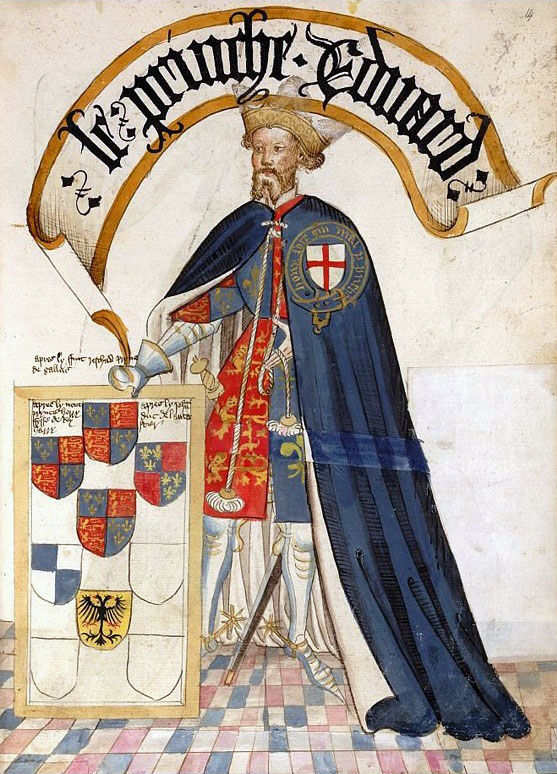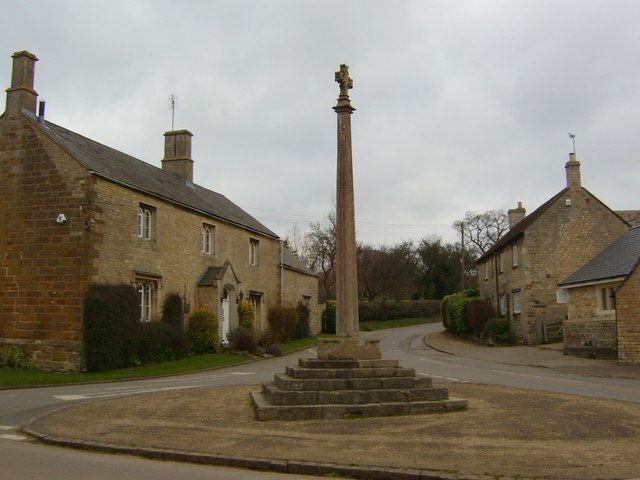|
Robert De Stretton
Robert de Stretton (died 1385) was Bishop of Coventry and Lichfield following the death of Roger Northburgh in 1358.Fryde, et al. ''Handbook of British Chronology'' p. 105 A client of Edward, the Black Prince, he became a "notorious figure"Owst, p.36 because it was alleged that he was illiterate, although this is now largely discounted as unlikely, as he was a relatively efficient administrator. Origins Robert de Stretton is presumed to have been born at Great Stretton or Stretton Magna in Leicestershire, a village that has since disappeared, although neighbouring Little Stretton survives. His parents were Robert Eyryk and his wife Johanna. He is thought to have had three siblings: Sir William Eyryk, the heir to the family estates, John and Adelina. Fletcher considered that Sir William was the ancestor of a prominent Leicestershire landowning family, the Heyricks of Houghton on the Hill, but this is far from certain. Families called Heyrick, and later Herrick, were to influenti ... [...More Info...] [...Related Items...] OR: [Wikipedia] [Google] [Baidu] |
Bishop Of Coventry And Lichfield
The Bishop of Lichfield is the ordinary of the Church of England Diocese of Lichfield in the Province of Canterbury. The diocese covers 4,516 km2 (1,744 sq. mi.) of the counties of Powys, Staffordshire, Shropshire, Warwickshire and West Midlands. The bishop's seat is located in the Cathedral Church of the Blessed Virgin Mary and Saint Chad in the city of Lichfield. The Bishop's residence is the Bishop's House, Lichfield, in the cathedral close. In the past, the title has had various forms (see below). The current bishop is Michael Ipgrave, following the confirmation of his election on 10 June 2016.OurCofE twitter (Accessed 11 June 2016) History [...More Info...] [...Related Items...] OR: [Wikipedia] [Google] [Baidu] |
Leicester Abbey
The Abbey of Saint Mary de Pratis, more commonly known as Leicester Abbey, was an Augustinians, Augustinian religious house in the city of Leicester, in the East Midlands of England. The abbey was founded in the 12th century by the Robert de Beaumont, 2nd Earl of Leicester, and grew to become the wealthiest religious establishment within Leicestershire. Through patronage and donations the abbey gained the advowsons of countless churches throughout England, and acquired a considerable amount of land, and several Lord of the Manor, manorial lordships. Leicester Abbey also maintained a Monastic cell, cell (a small dependent daughter house) at Cockerham Priory, in Lancashire. The Abbey's prosperity was boosted through the passage of special privileges by both the Kings of England, English Kings and the Pope. These included an exemption from sending representatives to parliament and from paying tithe on certain land and livestock. Despite its privileges and sizeable landed estates, fr ... [...More Info...] [...Related Items...] OR: [Wikipedia] [Google] [Baidu] |
Chaplain
A chaplain is, traditionally, a cleric (such as a Minister (Christianity), minister, priest, pastor, rabbi, purohit, or imam), or a laity, lay representative of a religious tradition, attached to a secularity, secular institution (such as a hospital, prison, Military organization, military unit, intelligence agency, embassy, school, labor union, business, Police, police department, fire department, university, sports club), or a private chapel. Though originally the word ''chaplain'' referred to representatives of the Christian faith, it is now also applied to people of other religions or philosophical traditions, as in the case of chaplains serving with military forces and an increasing number of chaplaincies at U.S. universities. In recent times, many lay people have received professional training in chaplaincy and are now appointed as chaplains in schools, hospitals, companies, universities, prisons and elsewhere to work alongside, or instead of, official members of the clergy ... [...More Info...] [...Related Items...] OR: [Wikipedia] [Google] [Baidu] |
Roman Rota
The Roman Rota, formally the Apostolic Tribunal of the Roman Rota ( la, Tribunal Apostolicum Rotae Romanae), and anciently the Apostolic Court of Audience, is the highest appellate tribunal of the Catholic Church, with respect to both Latin-rite members and the Eastern-rite members and is the highest ecclesiastical court constituted by the Holy See related to judicial trials conducted in the Catholic Church. An appeal may be had to the pope himself, who is the supreme ecclesiastical judge. The Catholic Church has a complete legal system, which is the oldest in the West still in use. The court is named '' Rota'' (wheel) because the judges, called ''auditors'', originally met in a round room to hear cases. The Rota was established in the 13th century. Constitution The pope appoints the auditors of the Rota and designates one of them the dean. On Saturday, September 22, 2012, Pope Benedict XVI accepted the resignation, for reasons of age, of Bishop Antoni Stankiewicz as dean a ... [...More Info...] [...Related Items...] OR: [Wikipedia] [Google] [Baidu] |
Landed Gentry
The landed gentry, or the ''gentry'', is a largely historical British social class of landowners who could live entirely from rental income, or at least had a country estate. While distinct from, and socially below, the British peerage, their economic base in land was often similar, and some of the landed gentry were wealthier than some peers. Many gentry were close relatives of peers, and it was not uncommon for gentry to marry into peerage. It is the British element of the wider European class of gentry. With or without noble title, owning rural land estates often brought with it the legal rights of lord of the manor, and the less formal name or title of ''squire'', in Scotland laird. Generally lands passed by primogeniture, and the inheritances of daughters and younger sons were in cash or stocks, and relatively small. Typically the gentry farmed some of their land, as well as exploiting timber, minerals such as coal, and owning mills and other sources of income, but ... [...More Info...] [...Related Items...] OR: [Wikipedia] [Google] [Baidu] |
Cleric
Clergy are formal leaders within established religions. Their roles and functions vary in different religious traditions, but usually involve presiding over specific rituals and teaching their religion's doctrines and practices. Some of the terms used for individual clergy are clergyman, clergywoman, clergyperson, churchman, and cleric, while clerk in holy orders has a long history but is rarely used. In Christianity, the specific names and roles of the clergy vary by denomination and there is a wide range of formal and informal clergy positions, including deacons, elders, priests, bishops, preachers, pastors, presbyters, ministers, and the pope. In Islam, a religious leader is often known formally or informally as an imam, caliph, qadi, mufti, mullah, muezzin, or ayatollah. In the Jewish tradition, a religious leader is often a rabbi (teacher) or hazzan (cantor). Etymology The word ''cleric'' comes from the ecclesiastical Latin ''Clericus'', for those belonging ... [...More Info...] [...Related Items...] OR: [Wikipedia] [Google] [Baidu] |
Baron Ferrers Of Groby
Baron Ferrers of Groby (or Baron Ferrers de Groby) was a title in the Peerage of England. It was created by writ on 29 December 1299 when William Ferrers, 1st Baron Ferrers of Groby was summoned to parliament. He was the son of Sir William de Ferrers, Knt., of Groby, Leicestershire, (d.1287) by his first wife Anne Durward, 2nd daughter of Alan Durward and his wife Margery of Scotland, and grandson of William de Ferrers, 5th Earl of Derby. The first Baron was married to Ellen de Menteith, daughter of Alexander, Earl of Menteith. In 1475 the eighth baron was created the Marquess of Dorset, and the barony in effect merged with the marquessate. It was forfeited along with the marquessate when the third marquess was attainted in 1554. Barons Ferrers of Groby (1300) *William Ferrers, 1st Baron Ferrers of Groby (1272–1325) *Henry Ferrers, 2nd Baron Ferrers of Groby (1303–1343) * William Ferrers, 3rd Baron Ferrers of Groby (1333–1372) *Henry Ferrers, 4th Baron Ferrers of Groby (1356 ... [...More Info...] [...Related Items...] OR: [Wikipedia] [Google] [Baidu] |
Harringworth
Harringworth is a village and civil parish in North Northamptonshire, England. It is located close to the border with Rutland, on the southern bank of the River Welland, and around north of Corby. At the 2001 Census, the population of the parish was 247, falling to 241 at the 2011 Census. The area is dominated by the Welland Viaduct (known locally as the Harringworth Viaduct) that gracefully crosses the Welland and its flood plain immediately to the west of the village. History The villages name origin is uncertain. 'Enclosure of the dwellers at the stone(y) place' or 'enclosure at Haering (= stone(y) place)'. Alternatively, the first element may be a personal name, 'Hering/Haerra'. In 1086 Harringworth was considered a large village in the hundred of Corby, one of many possessions of the Countess Judith. The manor was acquired at some time before 1232 by William I de Cantilupe (died 1239), 1st feudal baron of Eaton Bray in Bedfordshire, who created a deer park, complet ... [...More Info...] [...Related Items...] OR: [Wikipedia] [Google] [Baidu] |
Baron Zouche
Baron Zouche is a title which has been created three times, all in the Peerage of England. Genealogy The la Zouche family descended from Alan la Zouche (d. 1190), lord of the manor of North Molton in North Devon, England, originally called Alain de Porhoët, or Ceoche, who was a Breton nobleman who settled in England during the reign of King Henry II (1154-1189). He was the son of Vicomte Geoffrey de Porhoët and Hawise of unknown origins. He married Adeline (or Alice) de Belmeis, daughter of Phillip de Belmeis and Maud la Meschine, who died at North Molton in 1150. By his marriage he obtained the manor of Ashby in Leicestershire (called after him Ashby-de-la-Zouch). His son was Roger la Zouche (c. 1175 – bef. 14 May 1238) who was the father of Alan la Zouche (1205–1270) and Eudo (or Odo) la Zouche. Alan (1205–1270) was justice of Chester and justice of Ireland under King Henry III (1216-1272). He was loyal to the king during his struggle with the barons, fought ... [...More Info...] [...Related Items...] OR: [Wikipedia] [Google] [Baidu] |
Subinfeudation
In English law, subinfeudation is the practice by which tenants, holding land under the king or other superior lord, carved out new and distinct tenures in their turn by sub-letting or alienating a part of their lands. The tenants were termed mesne lords, with regard to those holding from them, the immediate tenant being ''tenant in capite''. The lowest tenant of all was the freeholder, or, as he was sometimes termed, ''tenant paravail''. The Crown, who in theory owned all lands, was ''lord paramount''. The great lords looked with dissatisfaction on the increase of such subtenures. Accordingly, in 1290 a statute was passed, , which allowed the tenant to alienate whenever he pleased, but the person to whom he granted the land was to hold it for the same immediate lord, and by the same services as the alienor held it before. Scotland In Scots law, the feudal system was abolished by the Abolition of Feudal Tenure etc. (Scotland) Act 2000. The length of a lease was limited to 17 ... [...More Info...] [...Related Items...] OR: [Wikipedia] [Google] [Baidu] |





